Alabama's biggest waste dump inflicts misery on residents of Uniontown, whose complaints to the EPA have gone unheeded
UNIONTOWN, Alabama — As Esther Calhoun sees it, discrimination, rooted in the acts of many, has turned this wisp of a town into a dumping ground.
Alabama’s biggest municipal-waste site sits on a county road dotted by well-worn homes. Despite objections from a largely African-American neighborhood in Uniontown, the 1,000-acre landfill was approved by a county commission, and operating permits have been issued time and again.
“If this had been a rich, white neighborhood, the landfill would never have gotten here,” said Calhoun, whose sharecropper and slave ancestors toiled on local plantations, explaining why so many of her fellow citizens view the facility as discriminatory.
“They put it here because we’re a poor, black community,” she said. “They knew we couldn’t fight back.”
In the last decade, little has roused this town in the heart of Alabama’s “black belt,” 30 miles west of Selma, like the Arrowhead Landfill, a sprawling dump capable of collecting thousands of tons per day of household garbage, industrial waste and other debris — including coal ash, an often-toxic byproduct of coal-fired electricity — from more than half the nation.
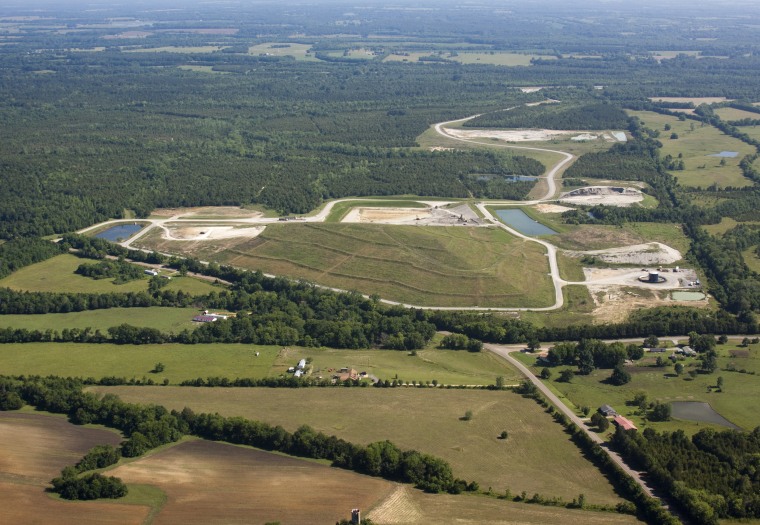
Foul odors, corrosive dust and menacing buzzards have become facts of life for people who live here. Some no longer sit on their porches, grow their gardens or let children play in their yards. In the area abutting the landfill, almost everyone claims to have suffered ill effects — from headaches and earaches to neuropathy. Residents say state regulators are absent; their sense of powerlessness is palpable.
The U.S. Environmental Protection Agency, while touting the importance of tackling environmental racism, has done little to address the residents’ concerns — until now. Spurred by a citizens’ complaint alleging the Arrowhead Landfill violates the civil rights of surrounding black property owners, regulators in the EPA’s Office of Civil Rights have launched an investigation into the facility’s permitting.
A little-known program within the EPA, the civil-rights office has one mission: to ensure that agencies receiving EPA funding do not act in a discriminatory manner. The mandate comes from Title VI of the federal Civil Rights Act of 1964, a sweeping law prohibiting racial discrimination by those receiving federal financial assistance. Experts say the provision offers the EPA a legal tool for combating environmental injustices.
The Uniontown complaint, filed by 35 residents in 2013, alleges that the Alabama Department of Environmental Management, or ADEM, twice violated civil-rights law when permitting the Arrowhead Landfill — in 2011, when state regulators renewed the landfill’s license; and again in 2012, when they approved modifications allowing the facility to expand by 169 acres.
The landfill, the complaint charges, has caused a battery of adverse impacts — offensive odors, fugitive dust, disease-infested birds — which has disproportionately harmed the black residents.
“It’s still the civil-rights movement in Alabama. Environmental justice is the way it manifests today.”
The head of the company that owns the landfill, Ernest Kaufmann, says most of the problems alleged in the complaint occurred under a previous operator. Since his company took over the landfill in 2011, he says, it has had “no penalties, no fines, no citations, nothing.”
Federal and state regulators have examined residents’ claims on multiple occasions, Kaufmann says, and some have written letters suggesting there is little basis for them. “How many letters does EPA and ADEM have to write to get people to understand these claims are not true?” he asked.
ADEM, for its part, has disputed the allegations in the citizens’ complaint. The head of the department, Lance LeFleur, calls the complaint “misplaced,” and an attempt to force “ADEM to do things we can’t do.” Under state law, he notes, a local government body — in this case, the Perry County Commission — approves the location of a landfill, while the state agency approves its design. He says ADEM’s permit renewal and modification expanded the Arrowhead Landfill’s waste-disposal area, not its footprint.
“Our responsibility is to make sure whatever and wherever it is, it does not harm human health and the environment,” LeFleur said.
The subject of 11 Title VI complaints over 17 years — among the most of any other state environmental agency, according to EPA records — ADEM insists it is complying with the law. It points to the EPA’s own record to prove it. “Every Title VI case in which we’ve been charged has resulted in our favor,” LeFleur said.
A Center for Public Integrity investigation has found that the EPA’s civil-rights program, championed under presidents from Clinton to Obama, almost always closes cases without action, either rejecting or dismissing nine out of every 10. Records show the agency has failed to exercise its authority to investigate claims even when it has reason to believe discrimination could be occurring.
The Uniontown complaint is one of the few open investigations at the EPA. Some — including another complaint against ADEM over a landfill in Tallassee, 100 miles east of Uniontown — have been pending for more than a decade. For the agency, Uniontown seems like something of a test case. Under pressure to beef up its Title VI enforcement, it could decide the case in a way that breaks from its problematic past — or not.
“They seem like they’re listening and they’re concerned, but they must have a deaf ear.”
EPA officials declined to discuss details of specific cases, including Uniontown. The director of the agency’s civil-rights office, Velveta Golightly-Howell, describes Title VI enforcement as a “priority,” and said her office is “making a lot of strides in [that] area.” She promises swift resolution to any pending civil-rights investigation.
“When cases come in the door,” she said, “we have a plan of action for resolving them.”
Marianne Engelman Lado, of the environmental law firm Earthjustice, who specializes in civil-rights litigation and is handling the Uniontown case, believes its outcome will depend upon the EPA’s approach to what she calls “a pretty extraordinary example of discrimination.” She is among a dozen or so advocates who have pushed the civil-rights office to reform its guidelines, including its standard for determining discrimination.
“There is a fundamental problem here,” Lado said, of the EPA’s existing civil-rights record. Despite their rhetoric, she said, agency officials have yet to show “political will to address the problem of systemic discrimination in places where health hazards are.”
‘A Terrible Place to Put a Landfill’
In Uniontown, where residents live within a four-mile ring of what they call “the mega-landfill,” as well as a cheese plant, a catfish mill and a sewage lagoon, they just want somebody, anybody, to help. Situated in the southwest corner of Perry County, among the state’s poorest, the city stretches approximately a mile and a half across rural terrain, its streets replete with rusty trailers, sagging porches and boarded-up buildings. Eighty-eight percent of its 2,449 residents are African-American, according to the Census Bureau’s 2013 estimate.
Short on jobs, the city has a median household income of $13,800. Once booming with businesses — furniture outlets, drug stores, shoe shops — its Main Street boasts little more than a supermarket and a restaurant. Dozens of storefronts sit vacant; the lone bank was shuttered in June.
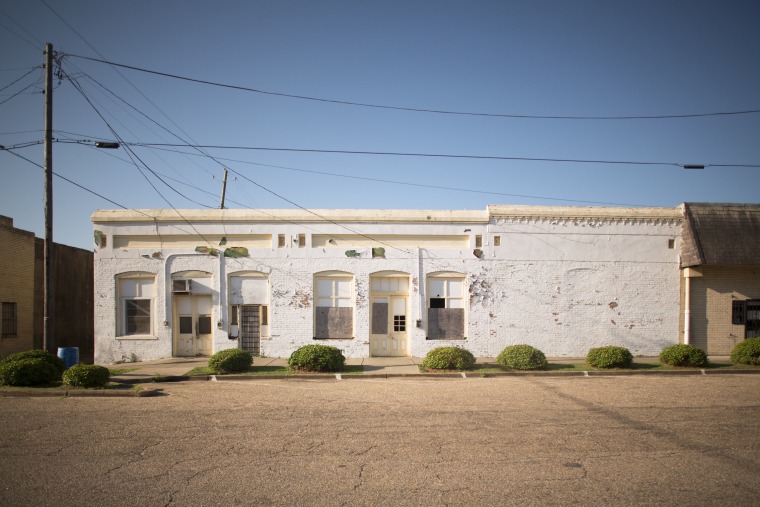
“The town is falling down,” said Calhoun, of Black Belt Citizens Fighting for Health and Justice, whose members constitute many of the Title VI complainants.
The Arrowhead Landfill, owned by Green Group Holdings, is one of the few industries. Straddling the city’s edge, the 977-acre facility sits on a two-lane stretch of County Road 1, among wooded fields and rolling pastures, overlooking 30 or so modest houses. It is marked by a road sign that reads, simply, “LANDFILL,” as well as an iron gate. About a third of its footprint — 425 acres — is permitted for waste disposal. From the outside, it is hard to see more than the looming, thinly vegetated mound — “the mountain,” residents call it — where 4 million tons of coal ash has been dumped.
Once a plantation, where slaves and tenant farmers picked cotton and milked cows, the landfill offers no pastoral vestiges. Gone are the fishing ponds, hunting grounds and fruit trees. Generations of slaves, buried in unmarked graves near the site, have all but disappeared for their descendants.
Partly because of this heritage, said Mary Leila Schaeffer, whose family ran a cotton gin in Uniontown and who lives in her grandparents’ 1840s-era plantation house, “We thought it was a terrible place to put a landfill.”
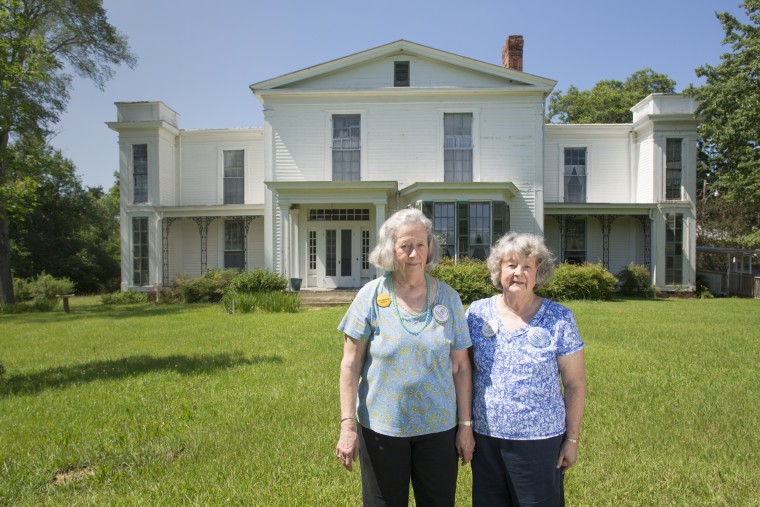
In 2006, Schaeffer and four other residents sued ADEM, along with the Perry County Commission, over the then-proposed landfill, challenging its permit on historical and environmental grounds. She remembers some 40 residents, black and white, showing up for the case’s sole court proceeding, only to be disappointed when the following year the trial judge ruled for the defendants.
By then, residents were waging a political fight, spurred by the landfill’s evolving size. Over the years, the facility grew from one collecting the trash of Alabama to that of 16 additional states along the East Coast; today, its 33-state service area encompasses much of the Midwest, too. Residents formed a coalition and signed petitions, only to find the county commissioners approve the landfill.
For many, their sense of betrayal lingers to this day.
“The people was being lied to,” said Carlene James, a Uniontown native whose family owns 65 acres near the landfill. She remembers attending public hearings — at times, driving 1,150 miles from her home, in Syracuse, New York, to testify — all while the landfill operator cleared trees and leveled dirt.
“I felt like it was making a fool of everyone,” she said.
Coal Ash Arrives
The Arrowhead Landfill opened in 2007, accepting “household garbage, commercial waste, industrial waste, construction and demolition debris, and other similar type materials,” as its permit states. Its presence was hard to escape. Residents noticed the traffic — 18-wheelers rumbling by front doors from New York, New Jersey and beyond — as well as the noise. Many believe the operations unearthed those old graves.
The landfill would take on new meaning two years later, when coal ash began arriving. The ash came from a disastrous spill occurring some 330 miles away in eastern Tennessee, where an earthen dam holding a billion gallons of the waste in a pond collapsed, deluging 300 acres in gray muck, destroying houses and dirtying a river. The 2008 disaster remains the largest coal ash spill in U.S. history.
Overseeing the spill’s clean up, regulators in the EPA’s regional office in Atlanta paved the way for the coal ash dumping at the Arrowhead Landfill — first approving the ash’s disposal at a municipal-waste landfill and then signing off on the facility itself. At ADEM, regulators granted a waiver classifying coal ash as “special waste.” Under the permit, the designation did not require special protections beyond the standard liners and water tests mandated at the landfill, such as a thicker disposal cover or a greater “buffer zone.”
ADEM’s LeFleur presents the waiver as routine, explaining that “the landfill could physically handle it,” and that coal ash was not classified by either the state or the EPA as “hazardous.”
One of the nation’s largest refuse streams at 136 million tons a year, coal ash contains harmful metals such as arsenic, chromium, lead, mercury and many others. It has fouled water supplies and endangered public health across the country.
In 2009, the first trainload of coal ash pulled into Uniontown, bound for the landfill. Every day, 120 rail cars carrying the Tennessee ash rolled by the city en route to the facility’s unloading area. The transfer of coal ash lasted 18 months. When it ended in 2010, the EPA estimated as much as 3 million cubic yards had been dumped.
John Wathen, an advocate who, as the “keeper” of Hurricane Creek, in Tuscaloosa, works on water-quality issues in Alabama and beyond, learned about the coal ash disposal in the fall of 2009, after following a tanker truck hauling what turned out to be the ash’s leachate — liquid leaking from the ash itself. He remembers the smell was “so overpowering” that his head throbbed. “I nearly passed out,” he said.
During weekly visits to Uniontown, Wathen said, “I was shocked at the seeming disregard for their community.” Months earlier, he had traveled to Tennessee to document the 2008 spill’s fallout, testing water sources and tagging dead fish. He watched cleanup workers in hazmat suits, gloves and masks handling coal ash as if it were a hazardous material — covered in piles, sealed in bags.
“They put it right in these people’s faces.”
At the landfill, by contrast, the ash pile was visible from neighbors’ yards. Wathen saw workers with no protective gear dumping the wet waste into a “disposal cell” in the ground, only to cover it with more coal ash — something ADEM approved as an “alternative cover material” for the compacted dirt that landfills must use daily to cover disposal operations, as required by state law.
“This would not have been done in an affluent, white community,” said Wathen, who spent months documenting with hundreds of videos and photos the conditions during the transfer — the white dust in water sources, the coal ash in the air. “They put it right in these people’s faces.”
For those living in the landfill’s shadows — and especially its ash mountain — the battle seemed constant. Residents endured the dust, which often blanketed streets, trees, lawns and rooftops. “It was like going through a dust storm in Texas,” said Booker Gipson, who owns property across the street from the landfill. Vehicles were so caked in dust that he and others could write on them. At times, wet ash clung to the tires.
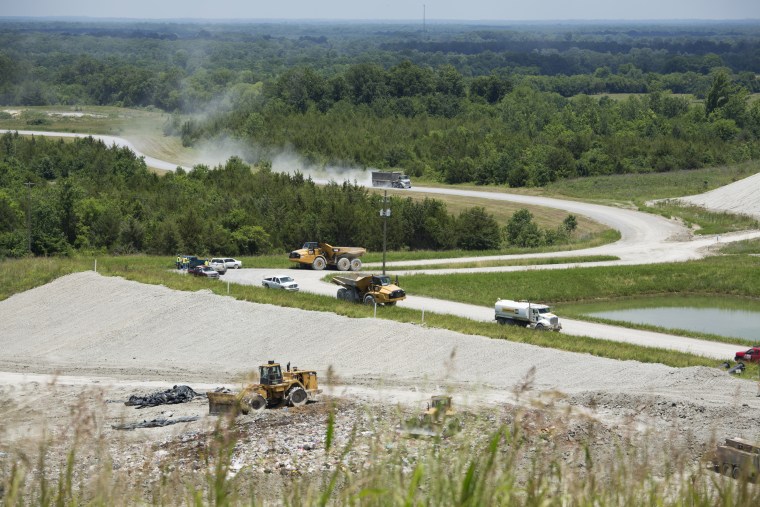
Then there were the buzzards, which circled the landfill and swooped into people’s yards. Hundreds lined rooftops, trees, and ridges for miles, spreading their wings yet refusing to fly. “It was like a horror movie,” said Ben Eaton, who has lived on his 23-acre property four miles from the landfill for 30 years. In the summers, so many buzzards overtook his yard that a neighbor took to ringing his doorbell to make sure he was alive.
An odor permeated the community. It was the kind of stench that ended outdoor activity; residents fled their front stoops. People slammed windows or stuffed towels in doors. At times, relatives refused to visit.
Everyone, it seems, has a different way to describe the smell. Spoiled milk. Rotten eggs.
“It smelled like s**t, you know what,” said Bertha Drew, who lives less than a half-mile away. She stopped sitting on her porch and tending to her yard because of the odor, which left her with what she calls “terrible headaches.”
RELATED: Environmental Racism Persists Amid EPA Inaction
Ailments — from nausea to nosebleeds, skin conditions and respiratory problems — became commonplace. Many suspected the landfill. Minutes into his first trip to Uniontown in 2010, Tom Brown, a retired minister from Birmingham, found himself in the throes of an asthma attack, wheezing and coughing. He remembers the particles in the air, dense and suffocating.
“There was no mistaking this was a reaction to what I was breathing,” said Brown, noting that he, at least, could leave Uniontown — unlike residents he met.
In the ensuing years, residents complained about these effects and more — at an EPA “listening session” in 2011 and at an ADEM public hearing that year. They flooded complaint lines at ADEM, often filing multiple reports a day. They enlisted help from environmental advocates who, in turn, filed their own complaints. Some, like Wathen, included test results showing unsafe levels of arsenic and other metals in the area’s surface water. But as the residents’ complaints mounted, so did their frustrations.
“They seem like they’re listening and they’re concerned,” Calhoun said of state regulators, “but they must have a deaf ear.”
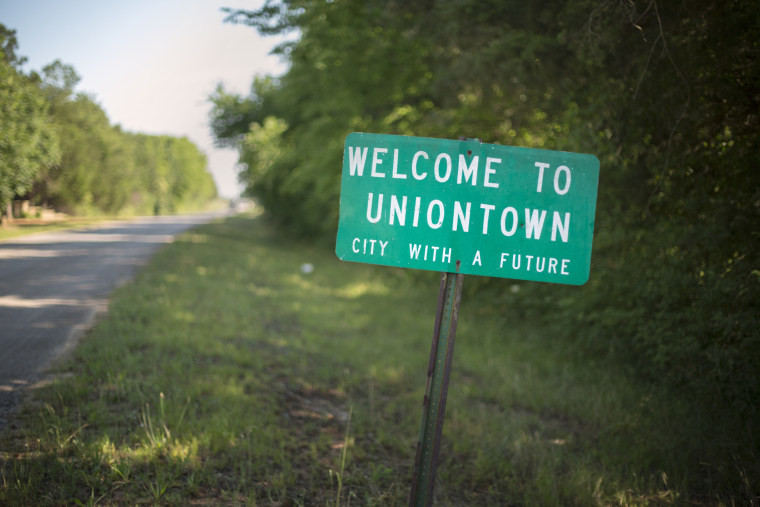
LeFleur, ADEM’s director, defends his agency’s oversight of the Arrowhead Landfill. Inspectors have visited the site, examined citizen complaints and monitored the company’s required reports, he said, adding that the agency has conducted twice as many inspections at the Uniontown facility as at any other disposal facility in the state.
He minimized the complaints, saying “there’s no data to support the alleged adverse impacts whatsoever.” ADEM has never issued a notice of violation against the landfill. While acknowledging the facility has had “issues,” especially during the coal-ash transfer, LeFleur dismissed residents’ claims of ill effects.
ADEM has tried to substantiate these claims, he said, “and we can’t.”
Read the rest of Environmental Justice, Denied at the Center for Public Integrity. The Center for Public Integrity is a nonprofit, nonpartisan investigative news organization in Washington, D.C.